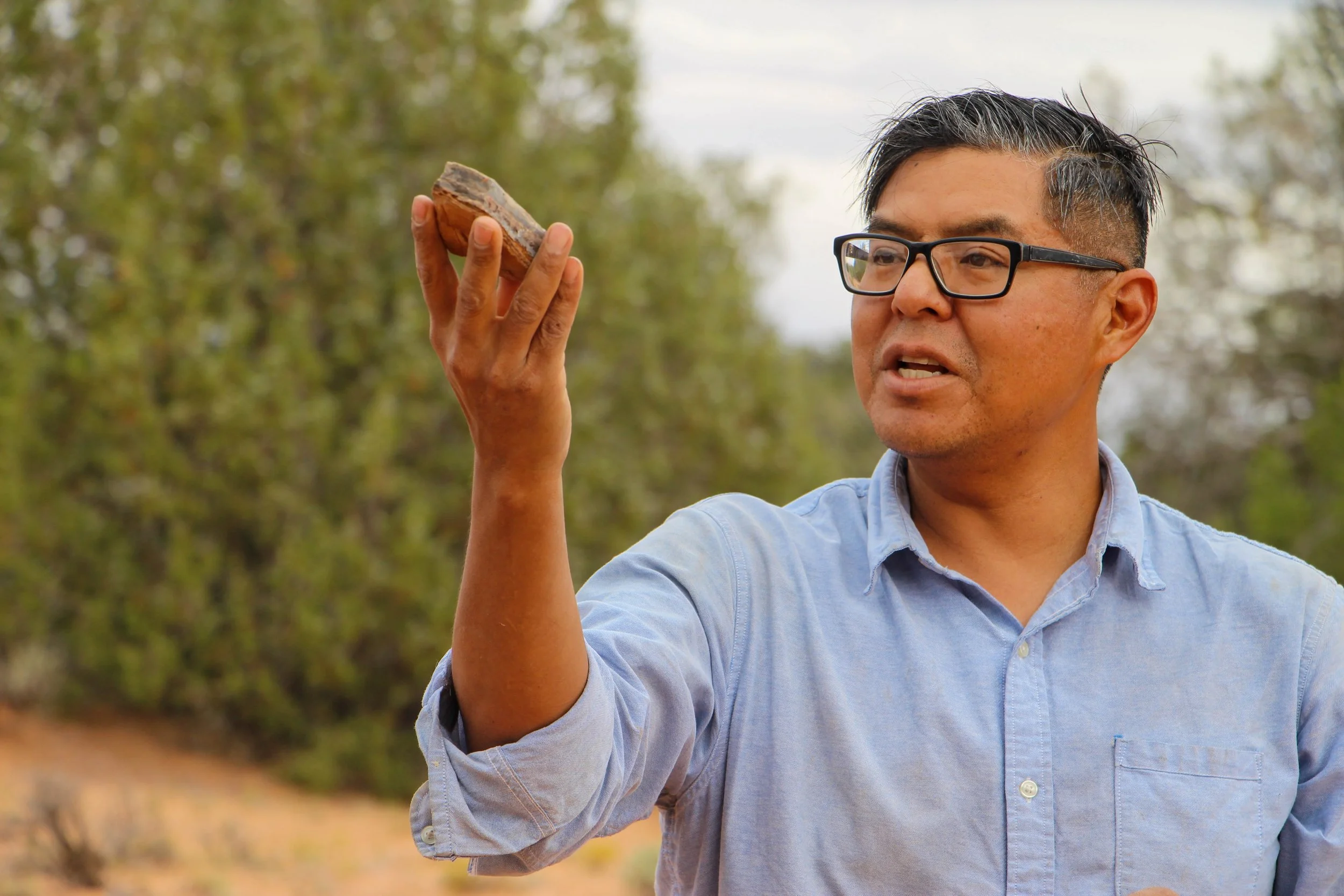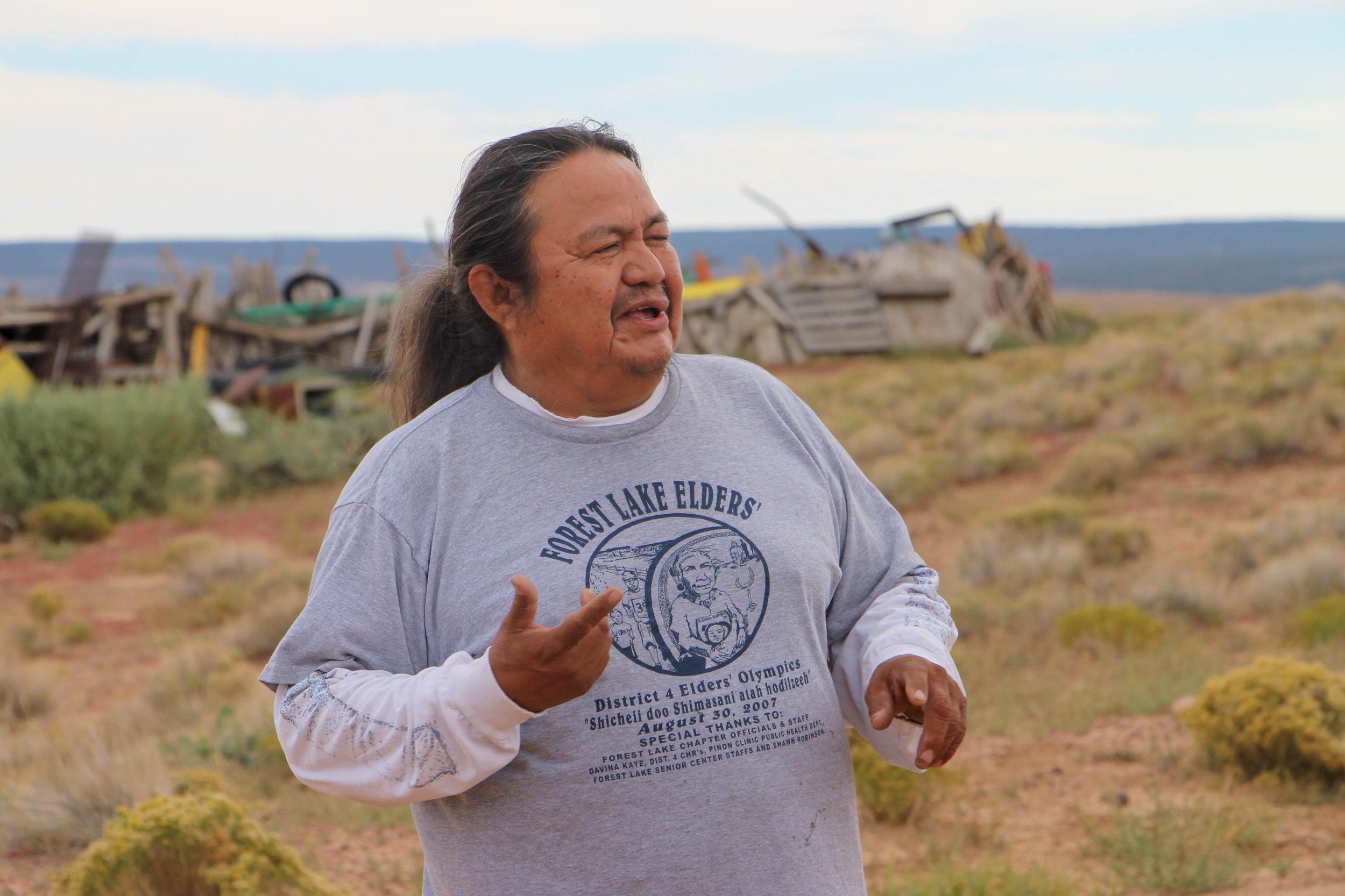Paul Arbetan
Associate Professor of Ecology, Diné College
Tsaile, AZ / Navajo Nation
11/08/21 – 11/24/21
Paul Arbetan teaches ecology at Diné college in Tsaile, Arizona on the Navajo Nation. After working with the Bureau of Land Management and New Mexico’s Department of Military Affairs, conducting ecological surveys, Paul is well versed in desert life systems. As a professor, he teaches his students to make close observations about the ever-evolving natural world. He reads the landscape closely, paying attention to the function of microscopic bacteria, the changes in vegetation brought about by differing levels of moisture in the air and the humans inhabiting it. Though, he walks faster than an Olympic race-walker, he takes the time to pause and look around. He turns to his students and asks “if seeds are everywhere why does vegetation exhibit patterns on the landscape?” He teaches his students to identify the climate processes and the importance of water availability which affect the types of plants growing in a specific area.
Paul emphasizes that everything in the natural world is interconnected and undergoes constant change. “Modern ecology, thinks of relationship of organisms and the patterns as this constant evolutionary interplay between the niche space of these plants and the organisms that feed on them. It’s this constant change, constant reshifting of the organisms in the landscape, and to us in our short lifetimes, it just often seems as though it seems pretty constant. But it's not.”
Although a scientist by trade, Paul looks at science, philosophy, and the arts as different yet all indispensable methods of knowing. After weeks of teaching Semester in the West students about ecology, Paul engaged in conversations not only about desert grasses but also free will and consciousness. Well versed in philosophy Paul says he only knows one thing for sure and that is that he knows absolutely nothing.
By Jade Strapart





